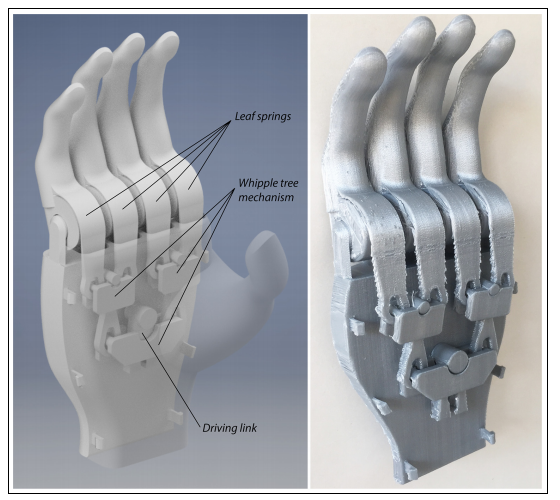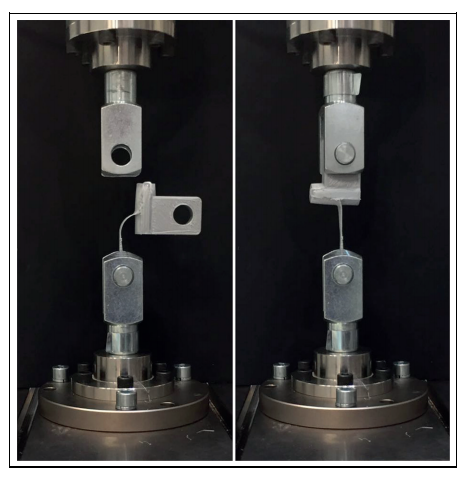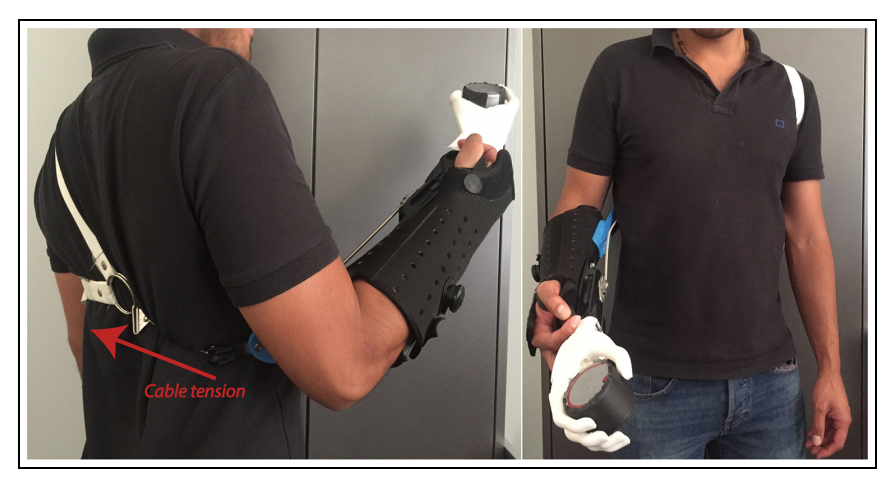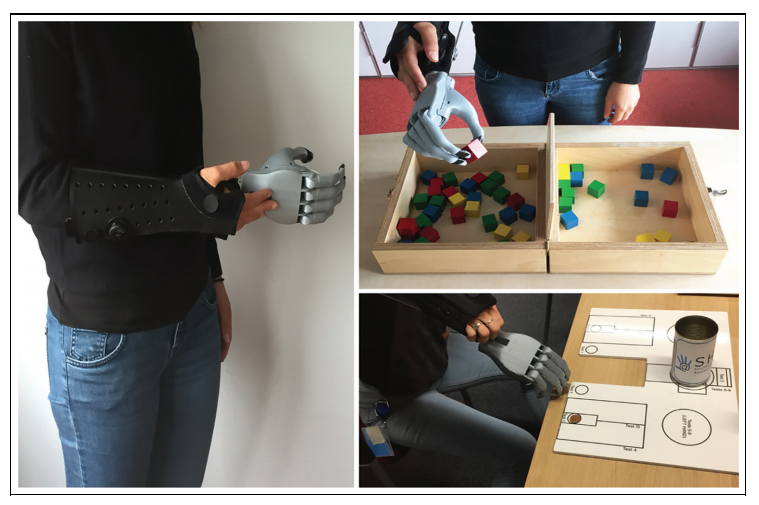In the recently published ‘Functional evaluation of a non-assembly 3D-printed hand prosthesis,’ authors (from TU Delft) Juan Sebastian Cuellar, Gerwin Smit, Paul Breedveld, Amir Abbas Zadpoor, and Dick Plettenburg outline their recent development efforts in 3D printed hand prosthetics—along with their plans for extending their use to developing countries.
 As the authors investigated statistics on amputees, they discovered that most frequently, individuals tend to lose limbs due to issues like trauma, disease, infection, and more. What is most surprising, however, is that while tens of millions of people have lost limbs—only 5-15 percent have access to prosthetics. In developing countries, healthcare is spotty, and while it may be available to some in larger cities, transportation from rural areas is obviously challenging. Treatment options are scarce, as are follow-ups for amputees.
As the authors investigated statistics on amputees, they discovered that most frequently, individuals tend to lose limbs due to issues like trauma, disease, infection, and more. What is most surprising, however, is that while tens of millions of people have lost limbs—only 5-15 percent have access to prosthetics. In developing countries, healthcare is spotty, and while it may be available to some in larger cities, transportation from rural areas is obviously challenging. Treatment options are scarce, as are follow-ups for amputees.
With the advent of 3D printing, however, and especially the progress being made with medical devices like prosthetics and orthotics, the researchers see great potential for developing countries. Recognizing the number of groups and non-profits already responsible for distributing a variety of 3D printed prosthetics, the authors have taken note of the many benefits that make such technology suitable for developing countries—beginning with affordability and speed in production. Customization is also key, however; for example, in more conventional medical settings, kids may grow out of their prosthetics before they are even delivered. 3D printing allows for patient-specific treatment and much easier adjustments.
Here, the researchers created a new approach for providing 3D printed hands to amputees in developing countries—re-working both design and fabrication, as well as mechanics and function. They based their new design on the following requirements:
- Body-powered (BP) control
- Cosmetic appearance
- Light weight
- Water/dirt resistant

Design of the 3D-printed prosthetic hand. The palm in the left picture is translucent to show the inner mechanisms (from top to bottom: leaf springs, whippletree mechanisms, and driving link), and the right picture shows the 3D-printed prosthetic hand without the palm.
The design consists of four fingers and a stationary thumb, with the fingers—moving in a rotated motion with one degree of freedom—connected to the palm via a hinged joint. The fingers are connected via a ‘whippletree arrangement,’ then move through a force transmission scheme that also includes the main driving link and links to each finger.
“The hand is actuated by a Bowden cable attached to the main driving link that can go on a linear motion following the movement of the cable. Return forces that permit hand opening are generated by leaf springs connected on one end to the base of the fingers and on the other end to the whippletree mechanism,” explain the authors.
“The leaf spring configuration is designed as a series of curved thin 3D-printed plastic sheets that allow elastic bending and work as pulling elements at the same time. When the fingers are activated, the pulling forces drive the leaf springs to unbend and deform to a straight configuration. As the leaf springs return and recover from the deformation, spring-like behavior is provided, combining actuation and a return spring in one non-assembly 3D-printed element.”

The experimental setup for the leaf spring ultimate strength test. The leaf spring is in its neutral configuration (left). The 3D-printed sample is under tensile and bending loading conditions during experiment. Note that the leaf spring is bent to a straight configuration, corresponding with a 90 flexion of the finger (right).
The researchers depended on an Ultimaker 3 printer, using PLA, for production of the hand, with the entire mechanism printed at once to avoid complex post-assembly.
“The hand was 3Dprinted with the circular cross-section area of the hinges of the fingers parallel to building plate of the 3D printer. In this way, the layers that form the leaf springs, the whippletree mechanism, and the driving link are deposited along the perpendicular direction of their moving direction during the hand prosthesis activation,” explained the researchers.
Although the 3D printed hand is only composed of two parts, it is still successful in adaptive grasping. Overall, the researchers found the design to be very promising, especially due to the equipment needed for production, which was not only affordable but accessible. They did find the leaf spring in need of further refinement, due to its lack of ability to withstand much cyclic loading. Other materials could solve this problem, however.
Along with the level of functionality found here, the researchers point out that rarely—if ever—are 3D printed hand prosthetics produced with accompanying evaluation. In this study, they were able to make a difference by offering metrics and data to be used as a base for further developments.
“Direct comparison with other existing 3D-printed hands was not possible given the lack of data in the literature. The results presented in this study can be used as a starting point for future developments on 3D-printed prosthetic hands,” concluded the researchers.
“The non-assembly design achieved a comparable level of functionality with respect to other BP alternatives. Taking into consideration that most ADLs require low gripping forces and adding an increased accessibility provided by the advantages of the nonassembly and 3D printing approach, we consider this prosthetic hand a valuable option for people with arm defects in developing countries.”

The experimental setup to measure the activation and pinch forces (left). The index and middle fingers push the load cell against the thumb. The ring and little fingers meet the maximum closing angle (90) (right)
3D printing of prosthetics continues to evolve around the world, and with users on many different levels; for instance, many students are involved too in creating devices for limb replacement, from forming their own charities to providing aid to amputees in Haiti. Organizations like e-NABLE are also famous for their efforts, helping those in need from Florida to Nigeria. Find out more about the efforts from TU Delft here.
What do you think of this news? Let us know your thoughts! Join the discussion of this and other 3D printing topics at 3DPrintBoard.com.

Our 3D-printed prosthetic hand attached to the simulator and a figure-of-nine shoulder harness. The cable tension that is delivered by the harness and activates the prosthetic hand is depicted (left).

Our 3D-printed prosthetic hand attached to the simulator and used by the participating subjects (left) for the Box andBlocks test (top right) and the SHAP test (bottom right). Gaffer tape strips were put over the thumb, the index, and middle fingers to increase grip (right).
Subscribe to Our Email Newsletter
Stay up-to-date on all the latest news from the 3D printing industry and receive information and offers from third party vendors.
You May Also Like
3D Printing News Briefs, April 13, 2024: Robotics, Orthotics, & Hypersonics
In 3D Printing News Briefs today, we’re focusing first on robotics, as Carnegie Mellon University’s new Robotics Innovation Center will house several community outreach programs, and Ugogo3D is now working...
Rail Giant Alstom Saves $15M with 3D Printing Automation Software 3D Spark
3D Spark has entered into a three-year deal with the rail giant Alstom. Alstom, a transport behemoth with annual revenues of $16 billion, specializes in the manufacture of trains, trams,...
Meltio Expands Global Reach with New Partnerships in the Americas and Europe
Spanish 3D printing manufacturer Meltio has expanded its sales network across the globe. With the addition of three new partners in the United States, Brazil, Argentina, and Italy, Meltio aims...
3D Printing Webinar and Event Roundup: April 7, 2024
Webinars and events in the 3D printing industry are picking back up this week! Sea-Air-Space is coming to Maryland, and SAE International is sponsoring a 3D Systems webinar about 3D...































